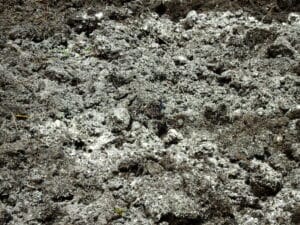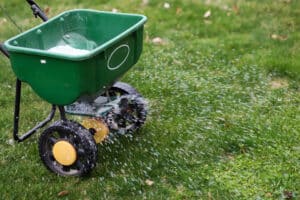St. Augustine grass enjoys tremendous popularity along the Gulf Coast. It’s known for its rich blue-green grass blades and high tolerance to heat, humidity, and salt. But no turfgrass fares well without proper care and maintenance. If you don’t look after your St. Augustine grass lawn properly, it may succumb to weeds or insect damage, then turn brown, patchy, and thin.
We’ll walk you through the maintenance process, from proper watering techniques to improving soil quality. Remember that hiring a professional lawn care company is the most efficient way to maintain and improve your lawn. Based on our research into national lawn care providers, we recommend TruGreen, a nationwide company with five annual plans, more à la carte options, and a satisfaction guarantee.
Find Lawn Help
- See our list of top lawn care companies based on in-depth research.
- Select the company that best meets your needs.
- Get a free, no-obligation quote for your home.
Get a Quote From Lawn Professionals Near You
Get a quote in as little as 5 minutes
Clicking “Get Your Estimate” submits your data to Home Service Quotes, which will process your data in accordance with the Home Service Quotes Privacy Policy.

Lime Soil Amendment

Lawn Fertilization
How Do I Revive St. Augustine Grass?
To revive St. Augustine grass, ensure your lawn receives 1/2 to 3/4 inches of water once or twice a week, supply your soil with the right nutrients, and address any pests or diseases. If you use an irrigation system, water in the early morning to help prevent conditions that promote fungus growth.
4 Steps To Revive St. Augustine Grass
Even if your grass looks sickly, there’s often hope for restoring your struggling lawn to its former glory. The agricultural school at the University of Florida, where St. Augustine grass is a popular choice, offers some recommendations for caring for this turfgrass.
1. Give It Space
This first step is key. Do not disturb your grass by playing on it, parking on it, or letting your dog urinate on it. Struggling St. Augustine grass is stressed and tender, and traffic and other activity will only make it worse.
2. Improve the Soil
St. Augustine grass can die if the soil isn’t conducive to its healthy growth. Here’s how you can rectify your soil situation.
- Perform a soil test: Start off your improvements by performing a soil test. You can purchase an at-home kit and send it off to a university or lab for testing, or hire a professional lawn care company. Knowing what composition and nutrients your soil needs will set your grass up for success.
- Dethatching: Too much thatch buildup can harm your St. Augustine grass. Thatch is the decomposing layer of organic matter, like grass shoots and stems, that collects between the soil and your lawn’s grass blades, and it can choke your grass by limiting its access to necessary nutrients, air, and water. Either rent or buy a dethatching rake to break up this soil and improve your soil’s breathability. This is best done between early spring and midsummer.
3. Water the Grass
Proper watering techniques go a long way, especially in the dead heat of the summer. For typical maintenance, you can water as needed when grass blades start to wilt or fold, applying 1/2 to 3/4 inches of water at a time. In the fall and spring, one or two waterings per week may be sufficient, but you may need more in the summer. Make sure the water soaks down in the soil at a depth of about 8 inches.
4. Be Careful Mowing
Many homeowners inadvertently mow their grass too short in an attempt to mow less frequently. This can actually stress the grass and attract weeds and pests. For best results, set your mower blades to 3.5–4 inches for St. Augustine grass. This height allows for proper root growth.
Can I Bring Dead St. Augustine Grass Back?
St. Augustine grass is a warm-season grass, which means it goes dormant when the temperature drops below about 55°F. If the temperature is low and your grass looks yellow-brown and crispy, you may just need to wait for the weather to warm up.
However, if your St. Augustine grass is truly dead, there’s no reviving it. To get a healthy lawn, you’ll need to start from scratch, and unfortunately, you probably won’t have a new, lush lawn quickly. St. Augustine grass seed has a notoriously low germination rate, so you will likely need to invest in plugs or sod.
What’s Wrong With My St. Augustine Grass?
Before you get started with solutions, you’ll need to figure out why your St. Augustine grass is suffering. The main reasons are pests, turf diseases, poor soil quality, and excessive fertilizer application.
Excessive Fertilizer
Too much fertilizer can burn your lawn, especially if the fertilizer is very high in nitrogen. Fertilizer burn happens when too much nitrogen is used and scorches the leaves—signs include yellow and brown discoloration and root damage.
Quick Tip
- Stick to a regular fertilizer schedule, and feed your lawn according to its grass type and soil composition. Early to mid-spring is often the best time to fertilize, after all frosts for the winter season have passed.
Diseases
St. Augustine grass can fall victim to a variety of diseases. Brown patch is the most common. This disease is caused by a fungus and thrives in high heat and humidity. It can develop as a result of both poor maintenance—homeowners watering late into the evening, so the grass can’t dry overnight—and high heat and humidity.
Take-all root disease is also caused by a fungus and looks a lot like brown patch in the beginning. The grass blades wilt and become brown, and the root system will weaken. Gray leaf spot creates tiny lesions in the grass, as well as brown spots and thinning grass. Your lawn may need to be treated with a fungicide to get rid of these diseases.
Pests
Insect damage is an incredibly common culprit in struggling St. Augustine lawns. Grubs, the whitish, soft-bodied, C-shaped larvae of beetles like the Japanese beetle and European chafers, eat grass roots, killing off the blades.
Chinch bugs are another lawn destroyer. These pests suck fluid out of turfgrass, leaving behind a secretion that inhibits the flow of water and nutrients—ultimately wilting and killing the grass.
Poor Soil Quality
Poor soil can lead to shallow root growth, preventing grass from developing healthy and hardy roots with adequate access to nutrients and moisture. Performing a soil test can show you what nutrients your lawn is lacking and whether you need to make any amendments.
Professional Lawn Care
A lawn care company like TruGreen can help keep your lawn healthy and robust and less susceptible to browning from pests and disease. TruGreen offers five annual plans and a variety of additional lawn treatments in every state except for Alaska and Hawaii.
FAQs About Reviving St. Augustine Grass
How do you fix damaged St. Augustine grass?
To fix damaged St. Augustine grass, you will need to maintain an ideal watering schedule, provide your lawn with the right fertilizer, and ensure that your soil is properly pH-balanced. You may need to apply pesticides or herbicides depending on the specific problems you’re experiencing.
What does Epsom salt do to St. Augustine grass?
Epsom salt can promote seed germination, nutrient absorption, and growth for both St. Augustine grass and a variety of plants in your yard.
How do you fix bare spots in St. Augustine grass?
We recommend that you sod or plug bare spots in your St. Augustine lawn rather than seeding them. You can purchase sod or plugs to cover your bare spots from a local garden center.
Our Rating Methodology
We back up our lawn recommendations with a detailed rating methodology that we use to objectively score each provider. We review lawn care plans and packages, navigate the provider website and speak with customer service representatives, request quotes, and analyze customer reviews for each provider. We then score the provider against our review standards for plan options, additional benefits and customizability, availability, trustworthiness, and customer service to arrive at a final score on a 5-point rating scale.


